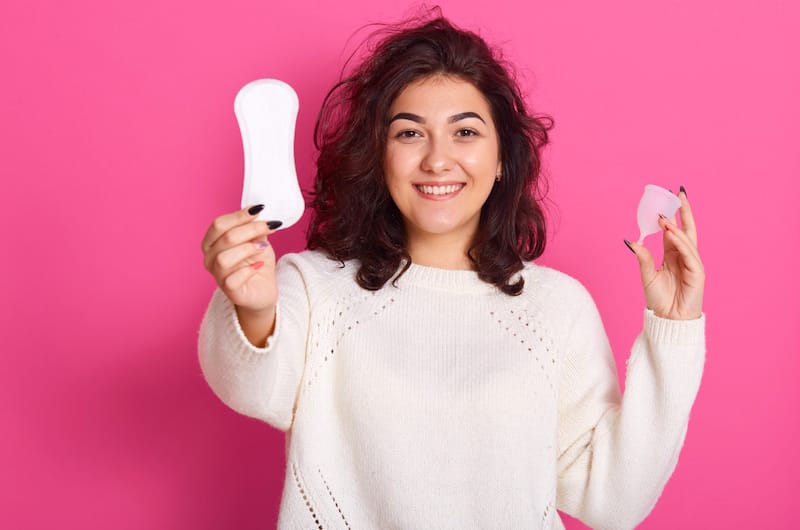With tampon shortage, various alternate options are both environmentally friendly and cheaper in the longer run. The possibilities include reusable cloth pads, menstrual cups, period underwear, or menstrual discs. Menstrual cups and discs are good alternate options for those who use tampons. Period underwear and reusable cloth pads are suitable for those who’re used to wearing pads. These all come in various sizes and absorption capacities to handle any flow. The switch might be tricky initially, but it’s better than using homemade tampons or leaving them for longer than recommended. Doing that will risk various vaginal infections.
A tampon is a favorite feminine hygiene product because it’s mess-free and user-friendly.
In fact, it’s such an essential part of our lifestyle that we can’t imagine how people used to handle their monthly periods before tampons.
It provides a sense of comfort when wishing to lead a more active lifestyle during those difficult days. On any other day, you would find the shelves stacked with tampons, but recently the U.S. has been suffering from its worst tampon shortage.
During these difficult times, we realize there’re other cheaper alternatives to fall back on.
Why look for tampon alternatives?
Looking for alternatives has been in trend for many years now. Not everyone might find the tampon suitable for them, some find it expensive, and others might feel it’s uncomfortable to insert.
Others feel spending so much money on tampons each month to throw them away is another major reason for polluting the earth.
They want to switch over to more environmentally friendly alternatives.
But the current issue for finding alternatives is due to the great tampon shortage.
The great tampon shortage
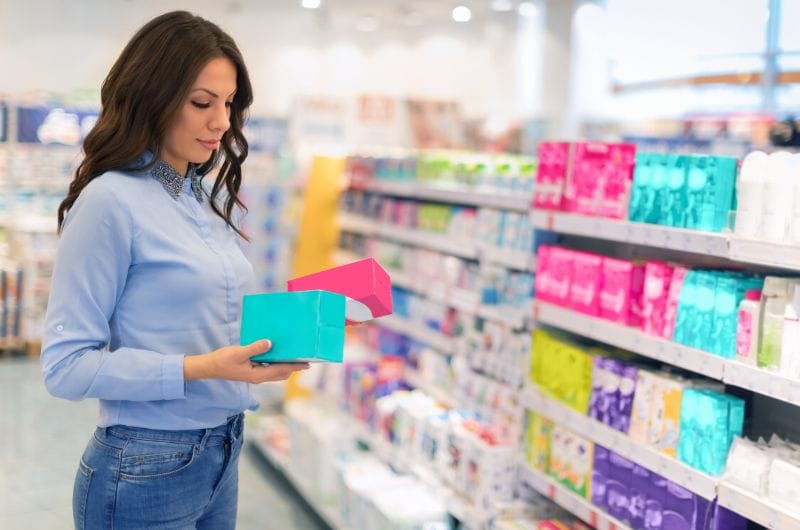
When you think the pandemic couldn’t have affected us that badly and everything is almost back to normal now, look around, and you’ll see how badly it affected us in various ways.
The supply chain issue has been causing a lot of shortages of various essential products in the market. While menstrual products like tampons are one of the repercussions, another would be the baby formula shortage.
Suddenly there are empty shelves that used to be stacked up high with various kinds of tampons. Another closely linked factor is a rise in consumer prices due to inflation.
Time was the first to report this shortage, saying that raw materials used for tampons have been the most in-demand. Not only for tampons but also needed for medical products like personal protection equipment.
Materials such as cotton, rayon, and sometimes pulp and plastic for applicators have been so much in demand that supply cannot meet these demands.
What’s hard is that this demand could never take a pause, unlike other needs which did during the pandemic due to reduced supply.
Periods are something that women get each month without fail and require a certain number of tampons which can’t be reduced in number either.
Even though popular brands like P&G have raised prices, women are still forced to buy them because they’re an essential item for them.
Overall, the cost of feminine care products in the U.S. has risen 10.8% from 2021 to 2022.
With the increased prices and current shortage of tampons, women are forced more than ever to jump to alternatives that can help them.
4 cheap alternatives to tampons
Not everyone finds tampons that helpful, and some even find them uncomfortable to wear, or others might look for alternatives because they wish to be more environmentally friendly.
1. Reusable cloth pads
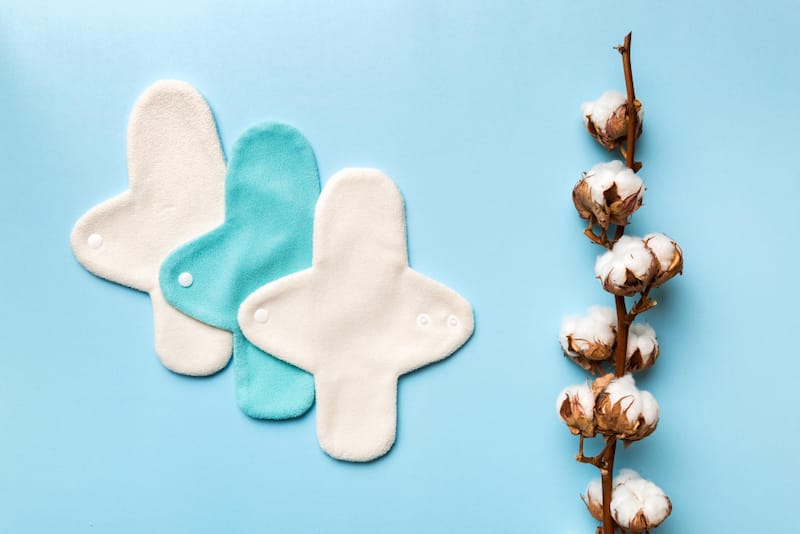
Many have heard about pads that are preferred by many for their easy use. You just need to stick them to your underwear, and you’re done for a few hours.
About 62% of women prefer a pad over the 42% of women using a tampon in the U.S.
An alternate cheaper option would be a reusable cloth pad. The first thing that comes to mind is how that would even work. But just like normal pads, they come in various sizes and absorption capacities from light to heavy periods.
According to the American College of Obstetricians and Gynecologists, these can go for 4 to 8 hours before you would need to clean it. It’s a much better option for those who prefer using pads over tampons as they’re already used to pads.
For cleaning purposes, just follow the directions given on the box of this product. Even if you have three reusable pads, you’re saving so much on rebuying them and being environmentally friendly.
2. Menstrual cups
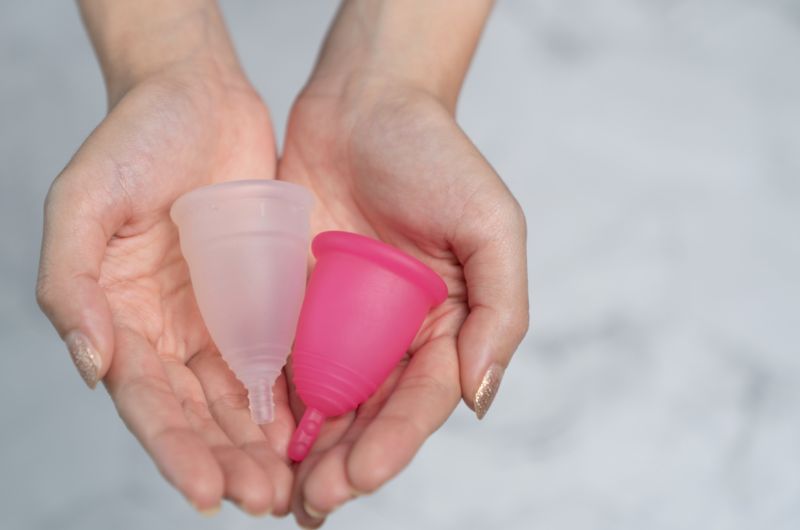
This is quite a popular alternative going around for years now, which would also save you bucks and not go insane looking for tampons on every shelf of every supermarket.
It’s a much better option for people who love using tampons. They’re inserted inside the vagina to collect your menstrual blood. Cups are small, funnel-shaped, quite flexible, and come in various materials.
Depending on your flow, they can remain inserted for 6 to 12 hours. They collect about one ounce of liquid at a time, roughly twice the amount of a super-absorbent tampon.
The most difficult thing is to be able to handle the insertion and removal of it, and it can get a bit messy. If you can handle that, this is the perfect alternate option for you instead of tampons.
The great thing is they last up to 10 years before you would need to throw them out, saving you a lot of money.
3. Period panties
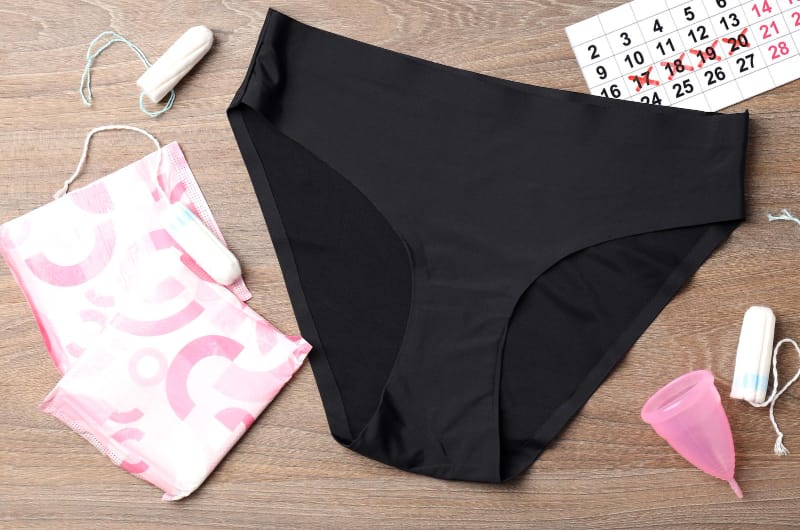
Just like you’ve granny panties for that time of the month, so you won’t spoil your better underwear, what if you just use underwear to absorb your period.
Sounds crazy, but these period panties have a special absorbent layer, are as comfortable as regular underwear, and won’t seep through or stain your clothes.
You can wear them during heavy flow days and even nights; the best thing is they hold three times the amount of a regular tampon.
They’re initially expensive, and you need 2-3 pairs but overall reduce the cost of buying a lot of tampons each month.
4. Menstrual discs
Menstrual discs are similar to menstrual cups as they’re inserted into the vagina as well.
They come both in reusable and one-time throw options. But if you’re looking for a cheaper alternative, then go for reusable, which would be better in the longer run.
They are designed differently than a menstrual cup as they have a learning curve to find the right fit for insert and removal. They go up to the cervix, providing an even better fit than the tampons.
They can handle your menstrual flow for 12 hours and surprisingly works well during intercourse.
What to do when you run out of tampons?
Running out of tampons is the biggest fear, and with the current shortage, things have turned for the worst, making this a reality.
It would be best if you weren’t using makeshift or homemade tampons. Our vagina has a lot of bacteria and other enzymes secreted by the vaginal walls, and inserting something foreign that isn’t FDA-approved can trigger various infections.
When the pH is unbalanced by inserting something which doesn’t belong there, our body can suffer from vaginal infections or get toxic shock syndrome (TSS), leading to various symptoms. These include fever, headache, vomiting, diarrhea, muscle aches, seizures, rash, renal failure, and death.
Even store-bought tampons often contain some chemicals or synthetic materials not suited to everyone, which can cause them to suffer.
It’s best to look for alternate options to tampons until the production restores and the demand is met by adequate supply.
FAQs
Is it okay to use toilet paper as a tampon?
Using toilet paper as a tampon would require one to take several of them and then fold them into a cylindrical shape to insert.
However, once inserted, even a good quality toilet paper disintegrates faster. Since there’s no string attached, unlike a tampon, you won’t be able to remove it.
Not only is it unsanitary, but it can also lead to various health complications.
What can I use if I don’t have tampons?
There’re various alternate options if you don’t have tampons. You can invest in reusable cloth pads, menstrual cups, period underwear, or menstrual discs.
If it’s an emergency, it’s best to use several strips of toilet paper and place them on your underwear or use a baby diaper. Don’t insert the toilet paper in your vagina because that’s unsanitary and can lead to infections.
Can I use old tampons?
As long as the tampons are stored in a cool, dry place and haven’t been soiled or opened up, they’re good to be used.
They don’t particularly have an expiration date like latex condoms, so it’s safe to assume you can use them.
How long can you wear a tampon?
If you’re ever facing a shortage, don’t try to wear your tampon for an extended period of time than recommended because it can be unsanitary and causes various health issues.
One such is toxic shock syndrome, when people leave a tampon in for more than eight hours or use one with too much absorbency.
To summarise
If you’re facing a tampon shortage or are just looking for a way to be more environmentally friendly and save money, then choosing to go through various alternate options is the best decision. Sure, it’s not easy to switch, but it’s worth it in the longer run.
If you think making your own tampons might solve the problem, you couldn’t be more wrong.
Inserting any makeshift tampon might risk suffering from vaginal infections, and it’s better to choose an alternate menstrual product.

